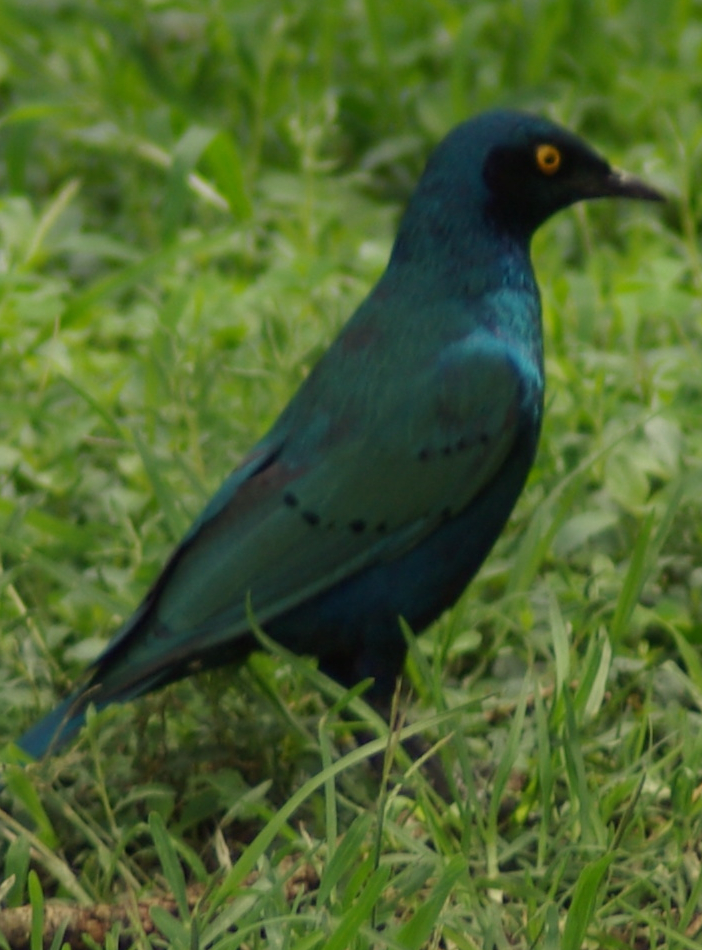- Greater Blue-eared Glossy-starling
Taxobox
name = Greater Blue-eared Glossy Starling
status = LC | status_system = IUCN3.1

image size =
image caption =
regnum =Animal ia
phylum = Chordata
classis = Aves
ordo = Passeriformes
familia = Sturnidae
genus = "Lamprotornis "
species = "L. chalybaeus"
binomial = "Lamprotornis chalybaeus"
binomial_authority = Ehrenberg, 1828)The Greater Blue-eared Glossy Starling, or Greater Blue-eared Starling, "Lamprotornis chalybaeus", is a
bird that breeds fromSenegal east toEthiopia , and south through easternAfrica to northeasternSouth Africa andAngola . It is a very common species of open woodland which undertakes some seasonal movements.Description
The Greater Blue-eared Glossy Starling is a 22 cm long, short tailed bird. This
starling is glossy blue-green with a purple-blue belly and blue ear patch. Its iris is bright yellow or orange. The sexes are similar, but the juvenile is duller and has blackish brown underparts.The populations from southern
Kenya southwards are smaller than northern birds and are sometimes considered to be a separate subspecies, "L. c. sycobius".The
Lesser Blue-eared Glossy Starling is very similar to this species, but the blue of the belly does not extend forward of the legs in that bird.The Greater Blue-eared Glossy Starling has a range of musical or grating calls, but the most familiar is a nasal "squee-ar".
Behaviour
Breeding
The Greater Blue-eared Glossy Starling nests in holes in trees, either natural or excavated by
woodpecker s or barbets. It will also nest inside the large stick nests of theSacred Ibis orAbdim's Stork . The three to five eggs are greenish-blue with some brown or purple spots, and hatch in 13-14 days. The chicks leave the nest in another 23 days.This species is parasitised by the
Great Spotted Cuckoo and occasionally theGreater Honeyguide Roosting
The Greater Blue-eared Glossy Starling is highly gregarious and will form large flocks, often with other starlings. Its roosts, in reedbed, thorn bushes, or
acacia , may also be shared.Feeding
Like other starlings, the Greater Blue-eared Glossy Starling is an
omnivore , taking a wide range ofinvertebrate s seeds and berries, especially figs, but is diet is mainlyinsect s taken from the ground.It will perch on livestock, feeding on insects disturbed by the animals and occasionally removing ectoparasites.
General references
*
*
Wikimedia Foundation. 2010.
